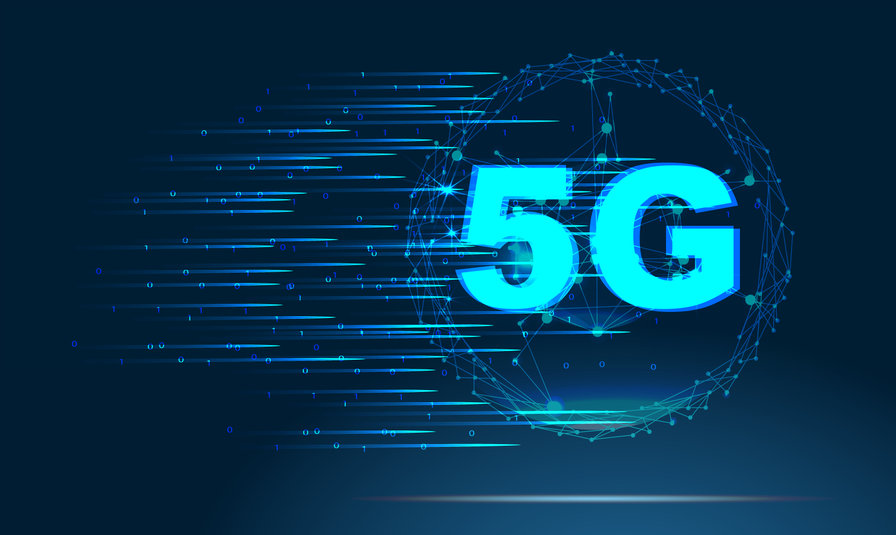Sustainably scaling 5G through holistic planning, network modernization and energy-smart operations
In the global ICT vendor’s latest Ericsson Mobility Report, EVP and Head of Business Area Network Fredrik Jejdling introduces the November 2022 edition with a focus on how communications service providers (CSPs) can deploy and scale 5G more sustainably while also delivering energy efficiencies into other global business sectors. And that’s a good thing because climate science has found that global greenhouse gas emissions need to be halved by 2030 and halved again each decade to reach net zero by 2050 at the latest, to mitigate the worst impacts of global warming.
While the ICT sector—including digital devices, networks and data centers—is rapidly growing it’s carbon footprint appears fairly stable, representing 1.4% of total global emissions, according to Ericsson research. The ICT sector has the ability to drive its own decarbonization with an 80% reduction projected with a switch to renewable energy. Further, the ICT industry, delivering technologies like 5G, artificial intelligence and the internet of things, could potentially reduce carbon emissions by up to 15% in sectors that invest in technology-enabled business sustainability.
Jejdlijng ties together the data: More than 200 5G CSPs will connect 1 billion users by the end of 2022, and can expect traffic to double every two years. CSPs also have the opportunity to deliver ICT products and services to other sectors to help them reduce emissions by 15% by 2030.
“The telecommunications sector has a key role to play in addressing global sustainability goals, by reducing its own emissions and enabling the digitalization of a range of services and industries,” he wrote. For operators, “To reduce the environmental impact, the growing data traffic needs to be managed with smart network modernization, combined with a balanced approach to network performance and use of energy-saving functionality to break the trend of increasing energy usage in mobile networks… Service providers are taking actions to deploy the latest generation of energy-efficient radio hardware and software, increase the use of renewable energy sources and operate site infrastructure intelligently, for example by implementing predictive-maintenance methods on site.”
That three-step approach—holistic network planning with a focus on balancing energy efficiency with user experience, network modernization through hardware and software upgrades, and energy-smart operations leveraging AI/ML—is explored in-depth in this podcast featuring Sashieka Seneviratne, director of sustainability for networks at Ericsson.
e& (formerly the Etisalat Group) sees 52% reduction in power consumption with new radio hardware and software
Ericsson’s three-step approach is much more than conceptual guidance; the firm’s customers are using this method to meet corporate-, country, and global-level environmental goals. e& (formerly the Etisalat Group) is working towards the United Arab Emirates’ goal of reaching net-zero by 2050 with e& looking to use its network to drive digital transformation in vital areas like education, healthcare and transportation.
“To reach net zero, e& is committed to accelerating the decarbonization of activities while focusing on mobile network modernization with the deployment of the latest generation of energy-efficient radio equipment…increased use of renewable energy sources and carbon-offsetting initiatives that are vital to achieve targets,” Group CEO Hatem Dowidar said a statement.
e& has five strategic pillars in its sustainability framework: digital transformation and innovation, accountable business practices, empowering people, connecting communities, and environmental management. To that last pillar, the goal is to “develop more sustainable products and enhance…operations for improved environmental efficiencies through energy, water and waste management.” It also considers increasing use of renewable energy sources.
Using Ericsson’s latest radio hardware and software, e& has decreased energy consumption by 52% compared to previously-deployed radios; that equates to a reduction of 7.6 tons of CO2 per site per year.
ICT as a driver of enterprise dematerialization
Recall Jejdling’s reference to how the telecommunications industry can enable “digitalization of a range of services and industries.” When something is digitalized, it no longer exists as a physical asset or process—dematerialization. This notion of leveraging ICT solutions to do more with less is a concept that’s being embraced by C-level enterprise decision makers, according to Ericsson research. In fact, enterprises that are front-runners in dematerialization are also more agile, sustainable and financially well-positioned.
From the Ericsson Mobility Report: “The key contributors to dematerialization at their respective enterprises are cloud infrastructure, selling software and services rather than physical products and using online training courses and documents. Nearly half of decision-makers agree that improved productivity and profitability are key benefits of dematerialization and around 40% say the same for environmental sustainability. This should be seen as a win–win situation that benefits both enterprises and the environment.”
Beyond dematerialization, ICT also facilitates other facets of enterprise sustainability. As workers become remote and mobile, energy savings are derived from lower utilization of office buildings and other facilities. But, in order to make mobile workers productive, collaboration tools that leverage cellular and cloud technologies become business-critical. Connectivity and compute can further be used in the transition to more renewable energy supplies; this also can lead to higher degrees of energy independence which can become a differentiating factor in a volatile macroeconomic and geopolitical environment.
Use this content library to get more information on how 5G can be deployed and scaled more sustainably:
- Report: Ericsson Mobility Report, November 2022
- Report: On the road to breaking the energy curve–a key building block for a net-zero future
- Article: As operators scale 5G, sustainability is a business imperative
- Podcast: The Voice of 5G—network energy efficiency and new 5G statistics
- Article: For 5G and beyond, energy is as important as RAN, core and transport
- Podcast: Will 5G Change the World? featuring Ericsson North America Chief Technology Officer Mike Murphy
- Article: Ericsson and Vodafone halve network energy consumption in breakthrough 5G trial
- Article: IntraGrain makes agriculture smarter with with IoT
- Article: With the transition to 5G, operators can achieve societal, financial and environmental goals
- Report: Breaking the energy curve—An innovative approach to reducing mobile network energy use

